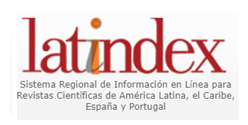DISRUPTIVE CRITIQUE OF GAMIFICATION AS AN EDUCATIONAL STRATEGY IN THE 21ST CENTURY
DOI:
https://doi.org/10.56219/dialctica.v1i25.3863Keywords:
Gamification, operant conditioning, motivation and playAbstract
The 21st century is accompanied by the emergence of new emerging educational
proposals linked to ICTs, showing themselves to be promising sources of improving
teaching-learning processes in classrooms. In this essay, gamification will be discussed
as a competent pedagogical strategy for the current needs of education, for which
documentary information from doctoral theses, scientific articles, books and magazines,
consulted in libraries and virtual repositories, was taken into account as an epistemic
source under the categories of gamification, motivation, game and operant conditioning.
Exposing successes and failures of gamification in its theoretical bases and structures,
as well as in the relationship with motivation and its use in the classroom. Managing
to conclude that gamification can be a useful methodology sporadically in classes, by
improving extrinsic motivation and not intrinsic motivation, preventing its uses from being
extrapolated in time, contexts and the understanding of concepts. At the same time, its
behavioral factor is evident when using operant conditioning to generate motivation and
changes in the user, indicating the possible consequences of its misuse, such as stress
or detachment from the activity when exposed to these stimuli for long periods of time.
Downloads
References
Boillos, F. (2024). La gamificación y el aprendizaje lúdico como recurso didáctico: práctica
comparada y análisis de una metodología en centros de España y Costa Rica.
Http://purl.org/dc/dcmitype/Text, Universidad de La Rioja, 2024. https://dialnet.
unirioja.es/servlet/tesis?codigo=325324.
Fajardo S, J, Santana E, A, & Caldas Q, C. (2022). Asociación entre el tiempo de uso de
videojuegos y la tendencia a la agresividad en estudiantes universitarios Bogotá
D. C.. Revista Colombiana de Educación, (84), e208. Epub October 30, 2022.
https://doi.org/10.17227/rce.num84-12076 DOI: https://doi.org/10.17227/rce.num84-12076
Maslow, A. «A Theory of Human Motivation», 1943. https://psychclassics.yorku.ca/ DOI: https://doi.org/10.1037/h0054346
Maslow/motivation.htm.
Pérez, I, & Navarro, C. (2022). Gamificación: lo que es no es siempre lo que ves.
Sinéctica, (59), e1414. Epub 13 de febrero de 2023.https://doi.org/10.31391/
s2007-7033(2022)0059-002
Putz, L. M., Hofbauer, F., y Treiblmaier, H. (2020). Can gamification help to improve
education? Findings from a longitudinal study. Computers in Human Behavior,
, 106392. doi: 10.1016/j.chb.2020.106392. DOI: https://doi.org/10.1016/j.chb.2020.106392
Quijano C, A & Navarrete P, Y. (2021). Chemistry teaching: need for strengthening and
understanding in high school students. Revisa Oratores, vol. 15, núm. 9, 2021. 24
Agosto 2021. http://portal.amelica.org/ameli/journal/328/3283041001/
Romero, M. y López, M. (2021). Luces, sombras y retos del profesorado entorno a la
gamificación apoyada en TIC: un estudio con maestros en formación. Revista
Electrónica Interuniversitaria de Formación del Profesorado, 24(2), 167-179.
Sitas, E. (2022). Diseño, producción y evaluación de la gamificación por medio de un
curso gamificado en Moodle. Http://purl.org/dc/dcmitype/Text, Universidad del
País Vasco - Euskal Herriko Unibertsitatea, 2022. https://dialnet.unirioja.es/servlet/
tesis?codigo=306481.
Zambrano M, D. F. (2021), Estudio de las estrategias de gamificación aplicadas al DOI: https://doi.org/10.56451/10334/6112
desarrollo de competencias digitales en docentes en formación. Http://purl.org/
dc/dcmitype/Text, Universidade de Vigo, 2021. https://dialnet.unirioja.es/servlet/
tesis?codigo=289738.
Downloads
Published
How to Cite
Issue
Section
License
Copyright (c) 2025 DIALÉCTICA

This work is licensed under a Creative Commons Attribution-NonCommercial-ShareAlike 4.0 International License.
La revista Dialéctica conserva los derechos patrimoniales (copyright) de las obras publicadas, que favorece y permite la reutilización de los mismos bajo la licencia Creative Commons Atribución-NoComercial-CompartirIgual 4.0 , por lo cual se pueden copiar, usar, difundir, transmitir y exponer públicamente, siempre que se cite la autoría y fuente original de su publicación (revista, editorial, URL y DOI de la obra), no se usen para fines comerciales u onerosos y se mencione la existencia y especificaciones de esta licencia de uso. Si remezcla, transforma o crea a partir del material, debe distribuir su contribución bajo la misma licencia del original.











